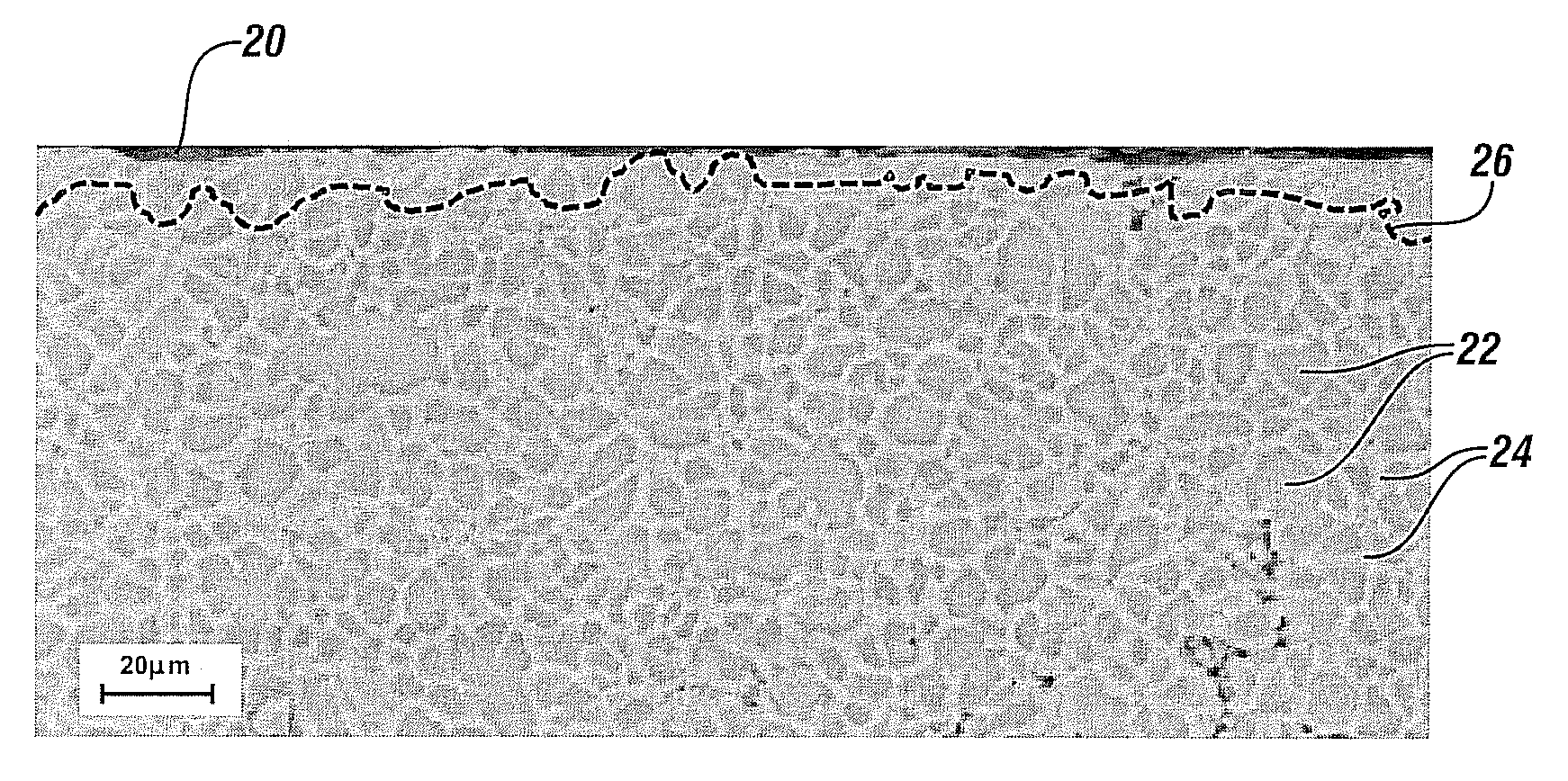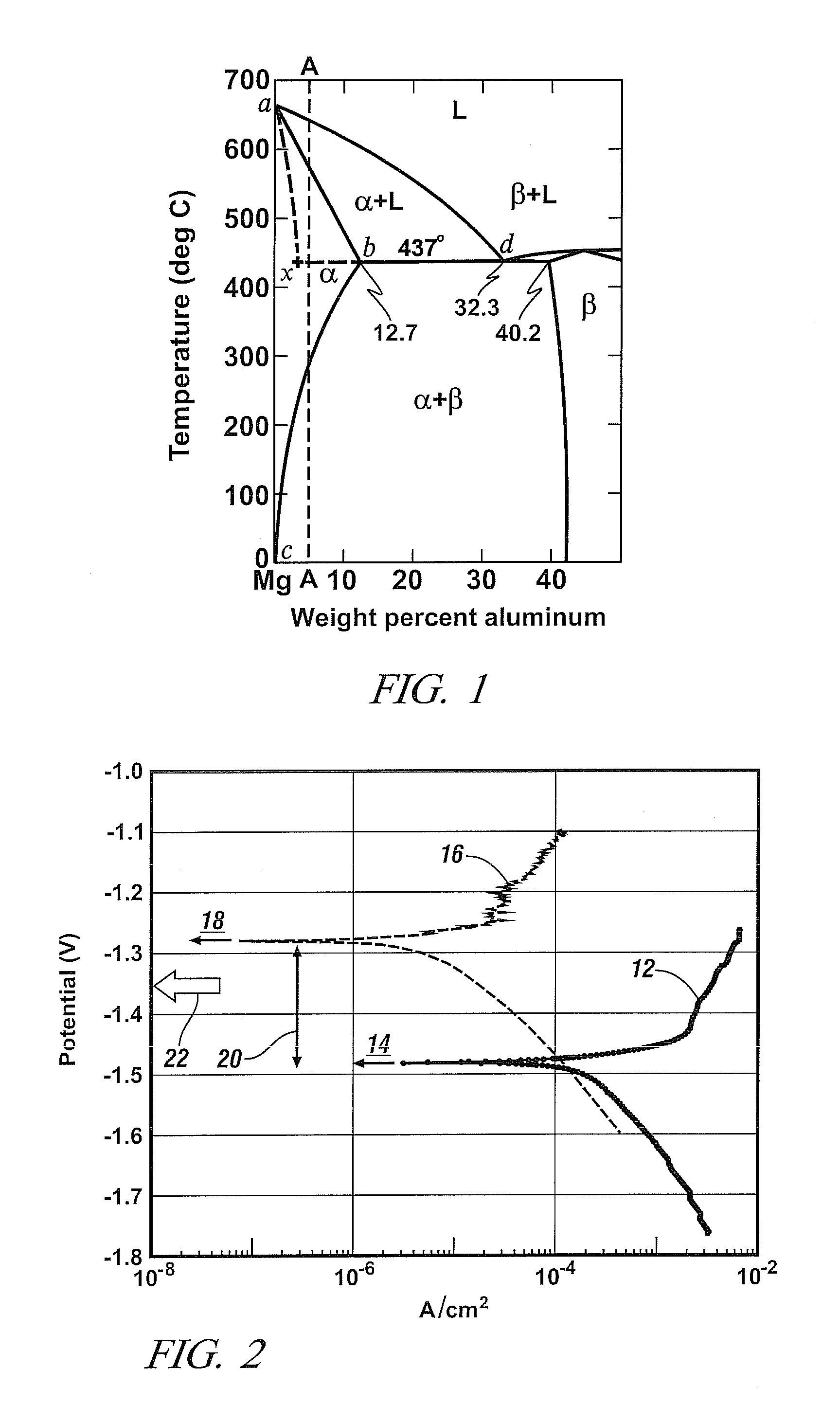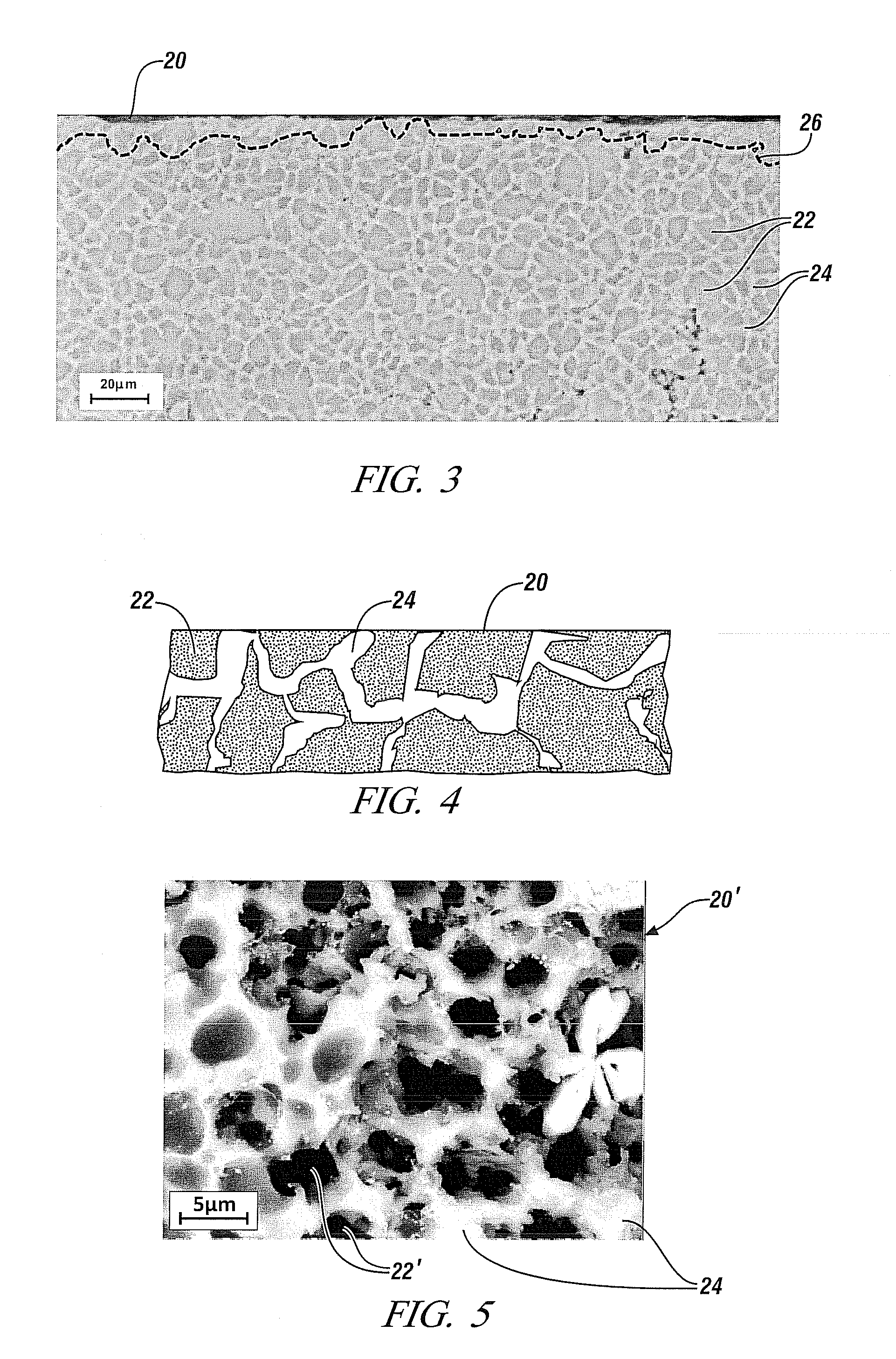Surface treatment of magnesium alloy castings for corrosion protection
a surface treatment and corrosion protection technology, applied in the direction of solid-state diffusion coating, vacuum evaporation coating, coating, etc., can solve the problems of non-uniform distribution of alloying elements in the cast solid, achieve enhanced corrosion performance, enhance corrosion resistance, and promote sintering and annealing of the anodized coating
- Summary
- Abstract
- Description
- Claims
- Application Information
AI Technical Summary
Benefits of technology
Problems solved by technology
Method used
Image
Examples
second embodiment
[0048]In a second embodiment, the reacted aluminum-enriched surface may be anodized, that is, an electrolytic process may be employed to develop an oxide layer of controlled thickness at the surface. Although the beta phase is enriched in aluminum, it also contains an appreciable magnesium content. It is therefore preferred to employ an anodizing treatment like Plasma Electrolytic Oxidation or PEO which has been demonstrated to form hard, corrosion-inhibiting oxide layers on both magnesium and aluminum.
[0049]PEO, also termed micro-arc oxidation, is an electrochemical surface treatment process for generating oxide coatings on metals. It is similar to anodizing in that a component is immersed in a dilute, alkaline, aqueous solution of say, KOH, and is made the anode of an electrical circuit so that it develops an oxide layer. But the voltages used, typically from 200 to 600 volts, are selected to exceed the dielectric strength of the oxide layer. This high voltage produces discharges ...
third embodiment
[0050]In a third embodiment the reacted surface may be aluminized by deposition of aluminum. Due to the similarity in melting points of magnesium (650° C.) and aluminum (660° C.) hot dip processing is not generally feasible but spray deposition processes in which atomized molten metal droplets are impacted at high velocity against the article may be used. Ion Vapor Deposition of aluminum is also feasible. In this process, a high negative electric potential is applied between the article and an aluminum evaporation source in a vacuum chamber containing argon at a pressure of about 10−2 Torr. The electric potential ionizes the argon gas in the chamber and creates a glow discharge around the parts so that as the aluminum from the evaporation source passes through the glow discharge it combines with the ionized argon and is transported to the part. As a result a uniform and dense coating of aluminum is plated on the article.
fourth embodiment
[0051]In a fourth embodiment the reacted surface may be painted. The roughened surface and the protruding beta walls will mechanically interfere with the paint film and enhance paint adhesion. The paint film is preferably 100 to 130 micrometers thick. A baked paint finish, as is commonly employed for automotive applications, generally offers superior performance than cold cured paint formulations.
[0052]Automotive paint generally comprises a plurality of coating layers which may be applied by dipping in a bath, or as powder or as a liquid spray. Commonly though, the first coating applied is a phosphate coating applied by dipping an assembled vehicle body in a bath containing zinc phosphate and other chemicals. Such bath chemistries are compatible with steel or aluminum alloys but not magnesium. But the development of the aluminum rich surface on the magnesium article may render the magnesium aluminum article compatible with phosphate systems in common use. Alternatively the anodized ...
PUM
| Property | Measurement | Unit |
|---|---|---|
| thickness | aaaaa | aaaaa |
| thickness | aaaaa | aaaaa |
| temperature | aaaaa | aaaaa |
Abstract
Description
Claims
Application Information
 Login to View More
Login to View More - R&D
- Intellectual Property
- Life Sciences
- Materials
- Tech Scout
- Unparalleled Data Quality
- Higher Quality Content
- 60% Fewer Hallucinations
Browse by: Latest US Patents, China's latest patents, Technical Efficacy Thesaurus, Application Domain, Technology Topic, Popular Technical Reports.
© 2025 PatSnap. All rights reserved.Legal|Privacy policy|Modern Slavery Act Transparency Statement|Sitemap|About US| Contact US: help@patsnap.com



